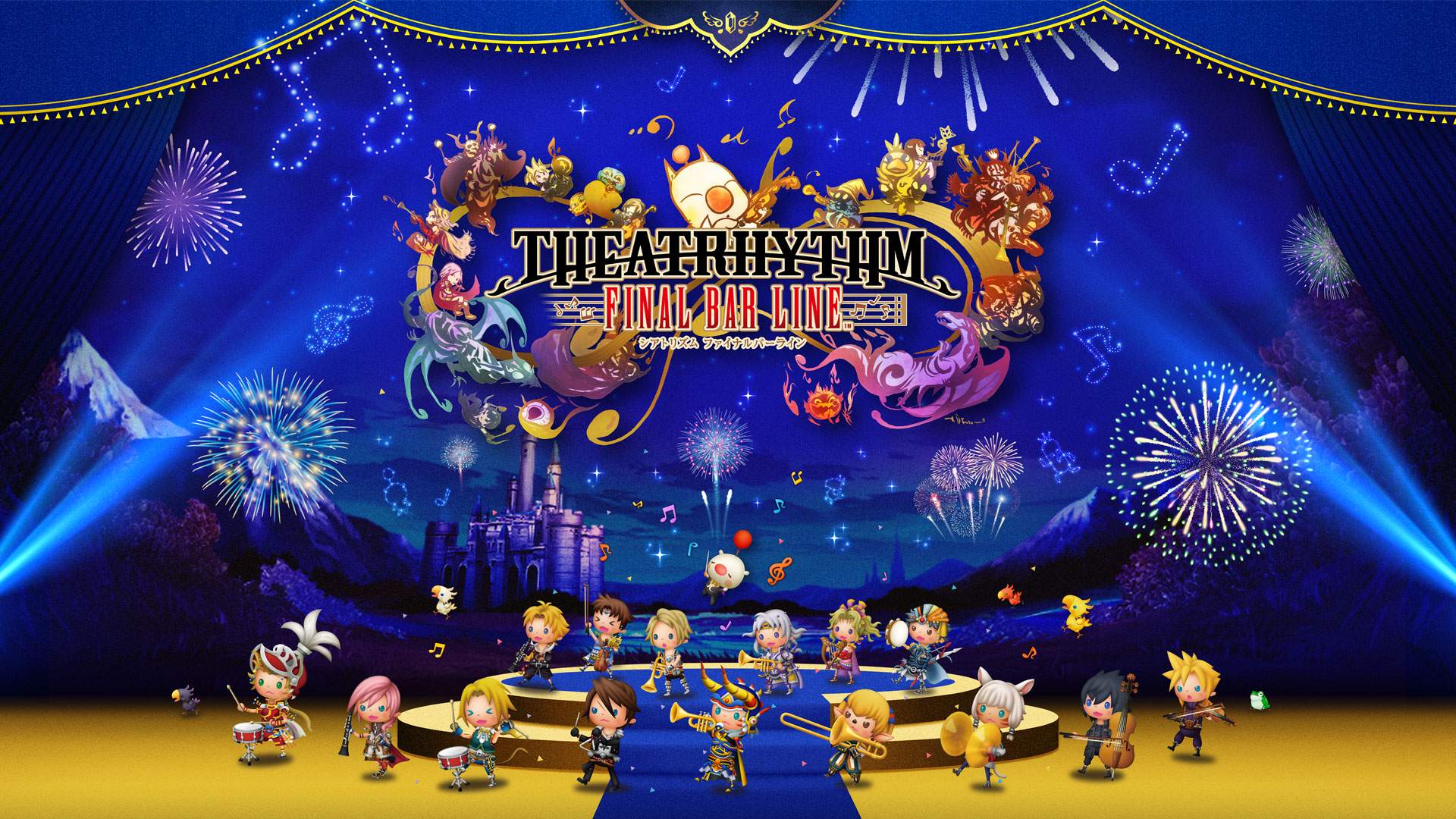Theatrhythm Final Bar Line
Developer: Indieszero
Publisher: Square Enix
Platforms: PlayStation 4 (Reviewed), Switch
Release Date: 16 February 2023
Price: $49.99 USD / $84.95 AUD – Available Here
Overview
This PlayStation 4 version of Theatrhythm Final Bar Line is the first entry in the Theatrhythm series to be released on non-portable consoles. Theatrhythm is a rhythm-action game with a RPG coat of paint that features a wide selection of music from the Final Fantasy series as well as other Square Enix titles. It was released previously for the Nintendo 3DS and iOS. It even had its own arcade cabinet which was never released outside of Japan.
Story
Theatrhythm doesn’t have any kind of story. It’s an arcade game first and foremost. However, many of the contexts and nuances that are exclusive to each title in the Final Fantasy series remain untouched. In the event music stages, for example, a montage of cutscenes from that particular game will play in the background. These stages really nail down the nostalgia. Beware of spoilers!
Gameplay
Theatrhythm plays very similar to many other rhythm games that came before it. Symbols will move from the left to the right on the screen, and you need to match these icons with the correct inputs while following the beat of the song. Players that are already familiar with other games in this niche such as Dance Dance Revolution or Taiko No Tatsujin will feel mostly at home here. Despite this, the original touch screen-based gameplay from Theatrhythm is different enough from the aforementioned titles, which makes it an experience that stands on its own. These mechanics transitioned perfectly to the DualShock 4; the two thumb sticks are used for slide type inputs while the rest of its buttons can be used in any way you wish to execute simple tap and hold triggers.
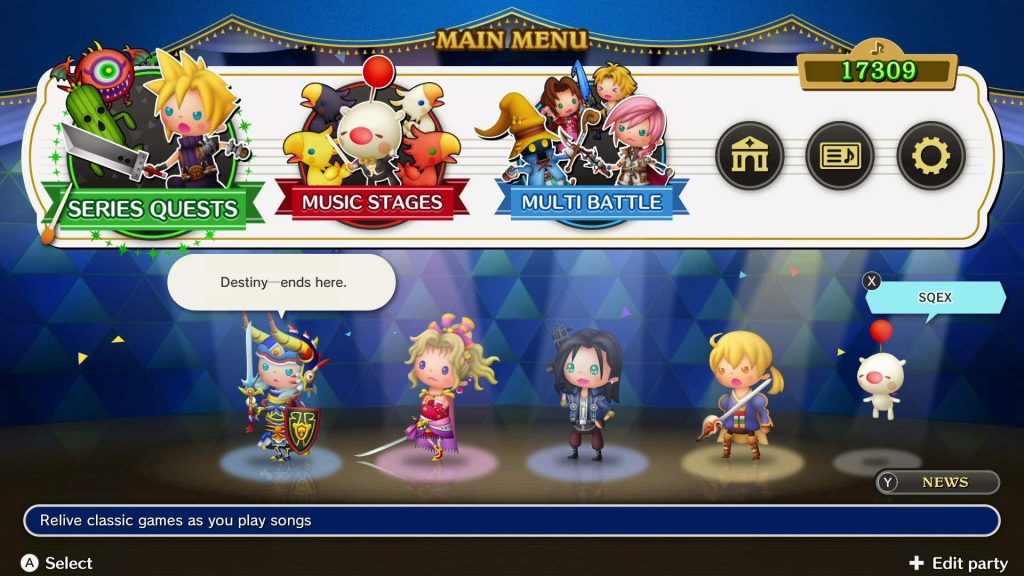
The difficulty curve is very generous, and it allows players to choose up to four different settings which range from basic to supreme; basic is very simple and easy for anyone to just pick up and play. It serves as a kind of warm-up before tackling higher difficulties. Supreme, on the other hand, will seriously test your memorization and hand-to-eye coordination in some songs.
There are four game modes: The main quest mode uses a RPG motif for its progression. Players can choose one of the main Final Fantasy games or its many spin-offs to start. A brief but effective tutorial serves to get players familiar with the game’s flow. After that, it’s time to assemble your party. Each character comes with a pre-assigned role such as summoner, fighter, etc., each with their own sets of skills and stats that can be leveled up.
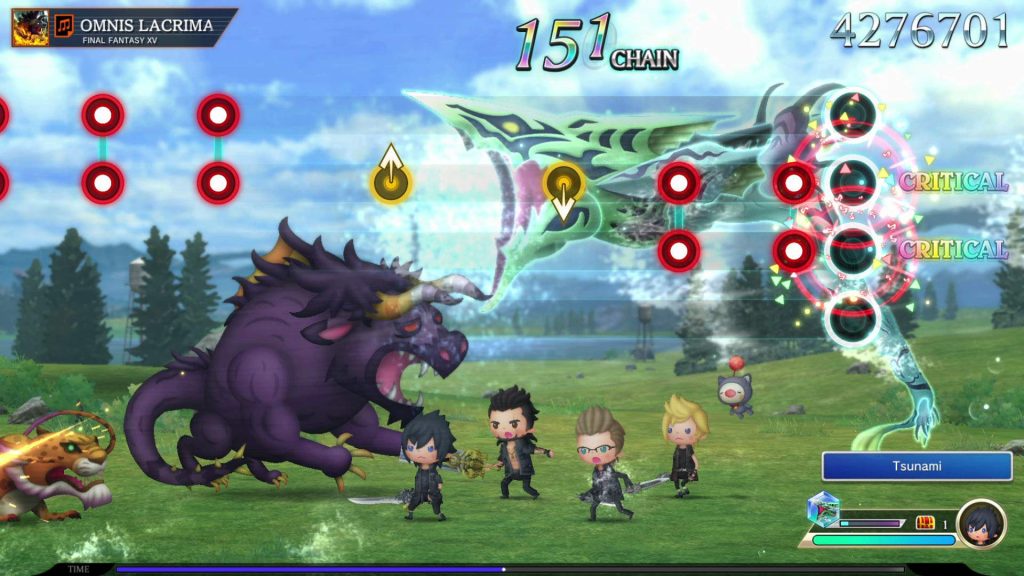
Each title starts with a series of FMS (Field Music Stages). These stages, as their names suggest, are the overworld portion of the RPG. They’re normally easy, although some of their gimmicks can take a bit of practice to get used to. The Final Fantasy series has some of the best overworld themes in any RPG. As such, these stages are extra delightful to play.
The BMS (Battle Music Stages), alternatively, functions as the dungeons and boss battles, and they require the use of your party stats and offensive/defensive skills to the fullest. It’s also pretty easy to die on BMS in the beginning of the game. With each stage completed, players can earn trademarked Final Fantasy items such as potions, phoenix downs and, most importantly, collectacards and summonstones. Collectacards can grant your characters stats buffs and also debuff enemies stats. Summonstones are equippable accessories that allow the player to call upon Ifrit and company for a lot of damage.
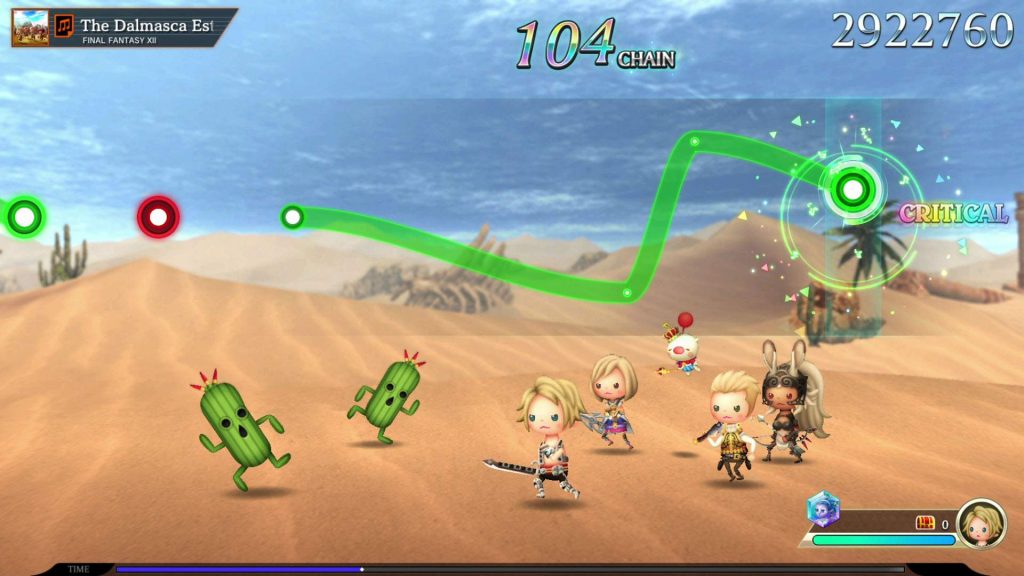
Quest mode is where you’ll be spending most of your time, and it really does feel like a RPG provided that you’re invested in the game enough. Truth be told, though; if you aren’t challenging yourself by amping up the difficulty or undertaking sidequests, then the novelty of playing Final Fantasy songs wears off pretty quickly, as the basic and “expert” difficulties get boring fast. One thing I can almost guarantee: If you’re a fan of game music, especially Square Enix’s offerings, and you decide to take your time and experiment with this game, then you won’t be able to put this game down for a while.
Besides quest mode, you can play any song that you previously unlocked on the music stage selection menu. It’s also where the EMS (Event Music Stages) are located. As I mentioned passingly above, these are easy stages with cutscenes containing key moments from a particular title that play in the background. The main function of EMS is to evoke emotion in the player, and it features tear-jerkers like “Eyes on Me” and “Aerith’s Theme”. I – almost – cried.
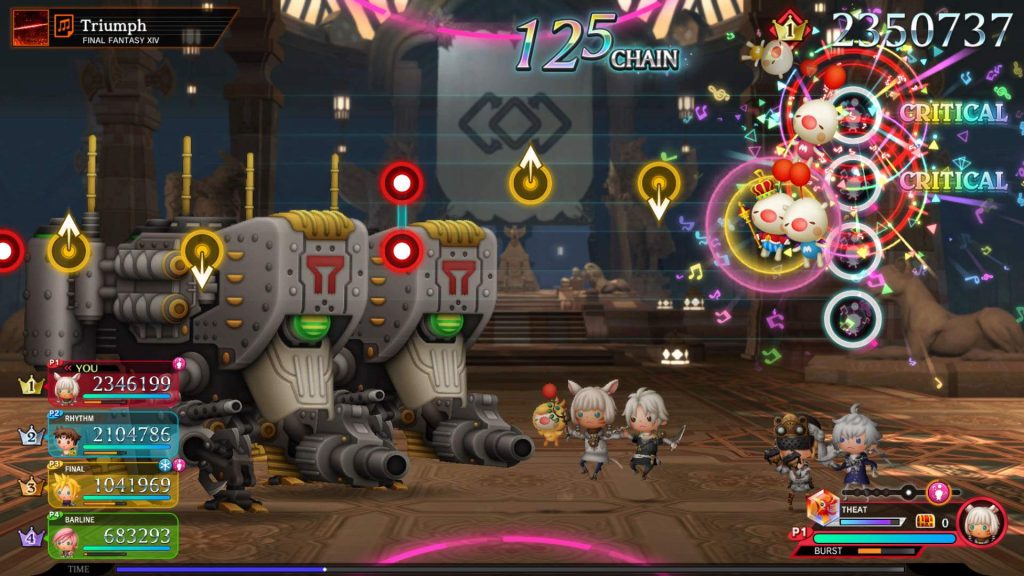
I couldn’t test the online multiplayer, but it seemed fun going by the description alone. There’s a new mechanic called burst which is an additional bar that fills as the match goes on. When the burst bar is full, it will give the opponent some sort of funny disadvantage like big chocobos covering their screen for a limited time.
Visuals & Audio
The characters are presented in a cartoon-esque style resembling marionettes. Their animations also follow this same premise which is befitting of the game’s title. Compared to the Nintendo 3DS version, Final Bar Line looks largely the same, but it runs in an obviously much higher screen resolution. Characters and enemies are also much bigger. The backgrounds use more well-defined textures, but they remain pretty simple; that’s understandable, because it could be detrimental to the gameplay to have too much happening on the screen at the same time. This same logic doesn’t apply to the field stages, though, and they could have received a better treatment, as they are too simple and samey. As it couldn’t be different, the showrunner here is the soundtrack. The songs sound are clean and loud enough. Their number is also impressive; 385 songs are included in the base game. More songs are expected to drop with season passes and these will encompass Square Enix’s other franchises such as Nier, the Chrono series, Dragon Quest and many more.
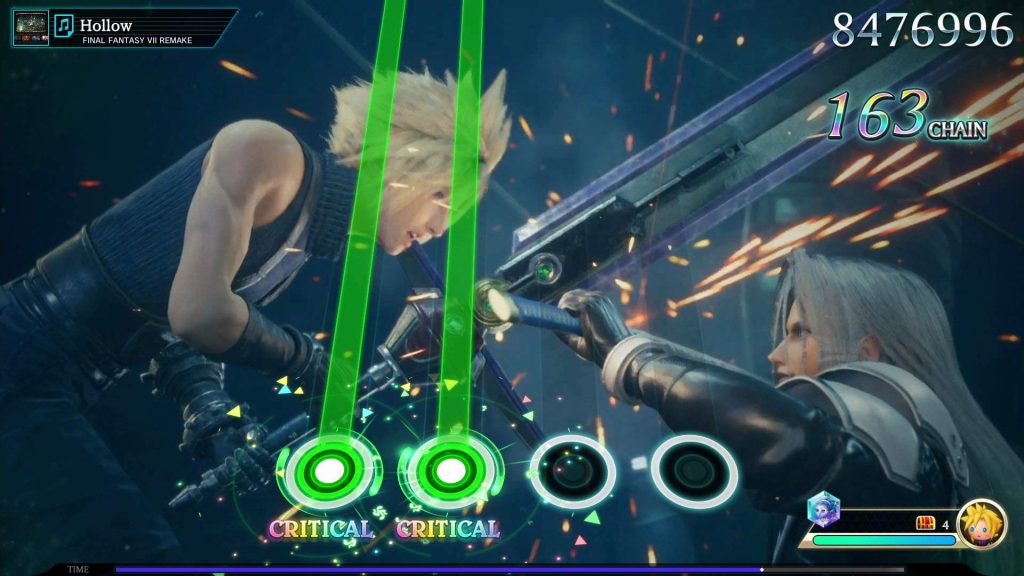
Overall
Seemingly the last game on the Theatrhythm series, Final Bar Line could have ended on a literal high note. The lack of more variety regarding game modes, and the steep DLC prices slightly tarnishes an otherwise outstanding package. The online multiplayer could extend the game’s longevity by a huge amount, but time will tell if it will garner enough audience to be successful. Even then, Theatrhythm Final Bar Line is certainly the best way to enjoy the series currently.
Capsule Computers review guidelines can be found here.


